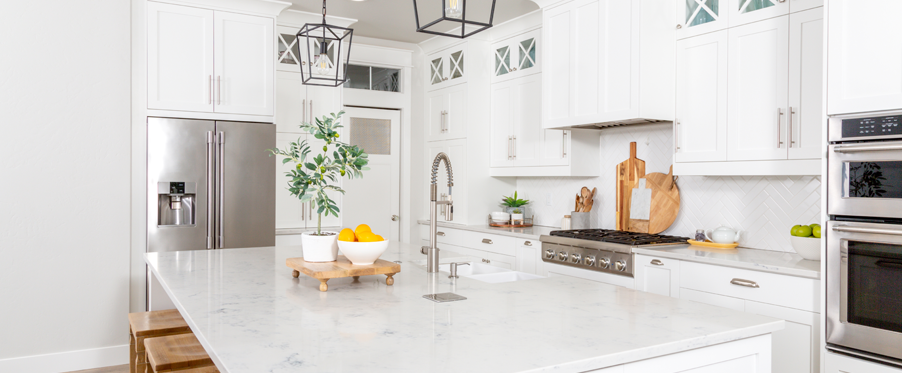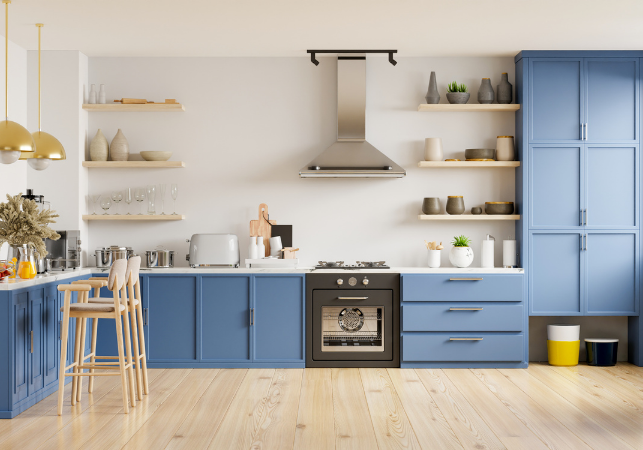Kitchen Cabinet Refacing
KITCHEN CABINET CONTRACTOR
Kitchen Cabinet Refacing: The Most Practical Way to Achieve a Brand-New Look
Having old, worn-out, or dated kitchen cabinets does not mean that you need to throw these out and replace them with new ones. Whether you want to refresh the look of your kitchen cabinets or renovate your kitchen, you don’t have to demolish perfectly functional kitchen cabinets since you can reface them instead to have them look as if it’s completely new.
And, we’re not talking about a new look that was achieved by having any damage on it filled or blended in before applying the new finish. By refacing it, your kitchen cabinets can achieve a different style and brand-new look as if it’s a completely different cabinet.
- Don’t hesitate, contact us for better business. Start a New Lisiting
KITCHEN CABINET CONTRACTOR
How Kitchen Cabinet Refacing Works

Refacing is the process of giving your kitchen cabinets a completely new look by applying or replacing a layer of wood, laminate, or veneer on its surface. The cabinet retains its completely functional components like the frame, drawer boxes, panels, drawer glides, hinges, and shelving.
As for its more aesthetic components such as the drawer faces and cabinet doors, these are either completely replaced to achieve a completely different look or refaced to refresh its current look. Cabinet handles, drawer pulls, and other cabinet fixtures can be replaced or reused depending on the look that the owner is going for.
Kitchen cabinet refacing also involves the installation of additional accessories if desired. This can include moldings, interior lighting, under-cabinet lighting, glass panels, and other storage and cabinet accessories.

Pros and Cons of Refacing Your Kitchen Cabinets
Refacing your kitchen cabinets is a great way to refresh the look and, even, change their style without throwing them away. You have practically limitless options to get the look that you want to achieve. You can change your traditional kitchen cabinets to a more contemporary one by switching out your cabinet doors and handles.
Pros of Kitchen Cabinet Refacing
● Updated style
● Significant savings compared to new cabinets
● Variety of choices to achieve the look you want
● Different material types are available for application (veneers, laminates, plywood, solid wood)
● Minimize waste
● No need for new cabinet boxes
Cons of Kitchen Cabinet Refacing
● No increase in storage space
● Not possible for cabinet boxes in poor condition
● Not DIY-friendly
KITCHEN CABINET CONTRACTORS
Our Step-by-step Kitchen Cabinet Refacing Process
1. Finalizing the details for the kitchen cabinet reface
We discuss with our clients every detail of the project including the refacing materials, cabinet door styles, molding, hinges, and cabinet hardware. It is also at this stage we talk with the client if they want to implement any modifications or additions to their current cabinet layout for additional storage.
2. Project preparation
Once we have set the details of the project on paper, we’ll start our preparations for the refacing by measuring all the necessary dimensions of the existing cabinetry. Then, we’ll order all the necessary materials, moldings, hardware, and accessories needed.
3. Preparing the cabinets for refacing
We’ll start by removing all the moldings, drawer faces, doors, and hardware from the kitchen cabinets. Then, we will prepare any surfaces for refacing by cleaning them with a solution, smoothing them out with a sander, and evening out any damaged areas with wood filler.
4. Refacing the cabinets
We will start by cutting the material to size with some excess to allow for trimming after attaching it to the cabinet. For wood and plywood, these are attached using adhesive and small pin nails. For wood veneer and laminate, we only use adhesive to attach these to the cabinets before using a smoothing blade to eliminate any air pockets.
5. Installing the new or refreshed cabinet doors and drawer faces
When the adhesives dry up, we will install the doors and drawer faces on the kitchen cabinetry. If the refacing material is solid wood or plywood, we will first apply the finish or veneer on the cabinet, doors, and drawer faces before installing them.
6. Installing moldings, cabinet hardware, and interior accessories
At this stage of the project, we’re technically done. All that’s left is some refinement, finishing any small details that the client requested, and returning the countertop to its place if we removed it for the refacing.

